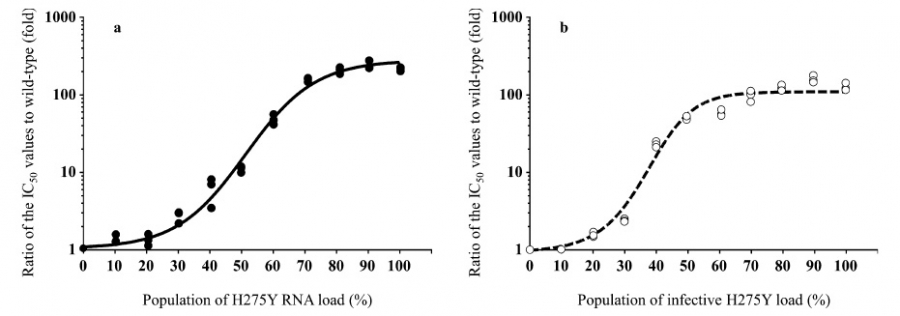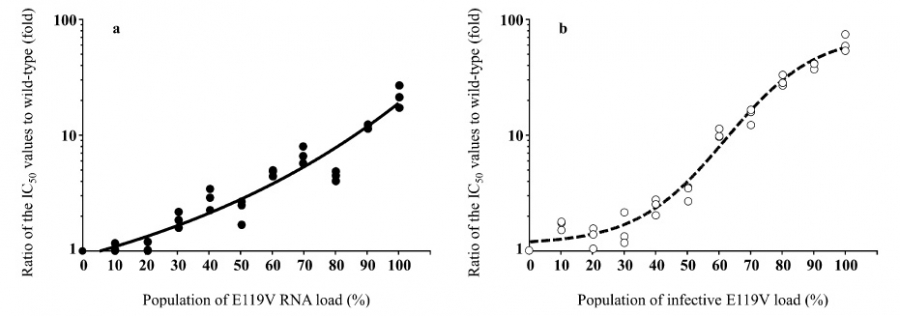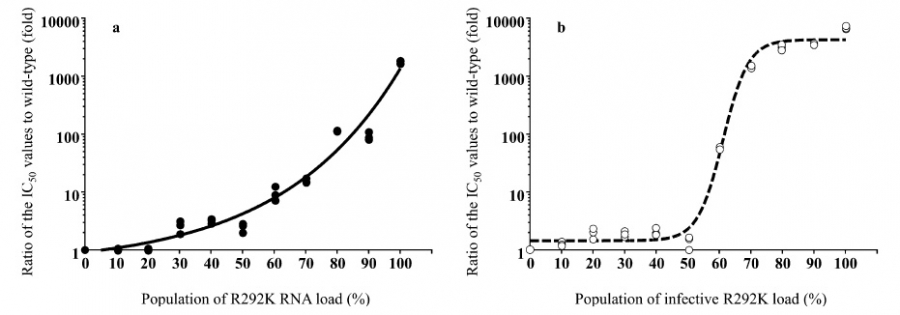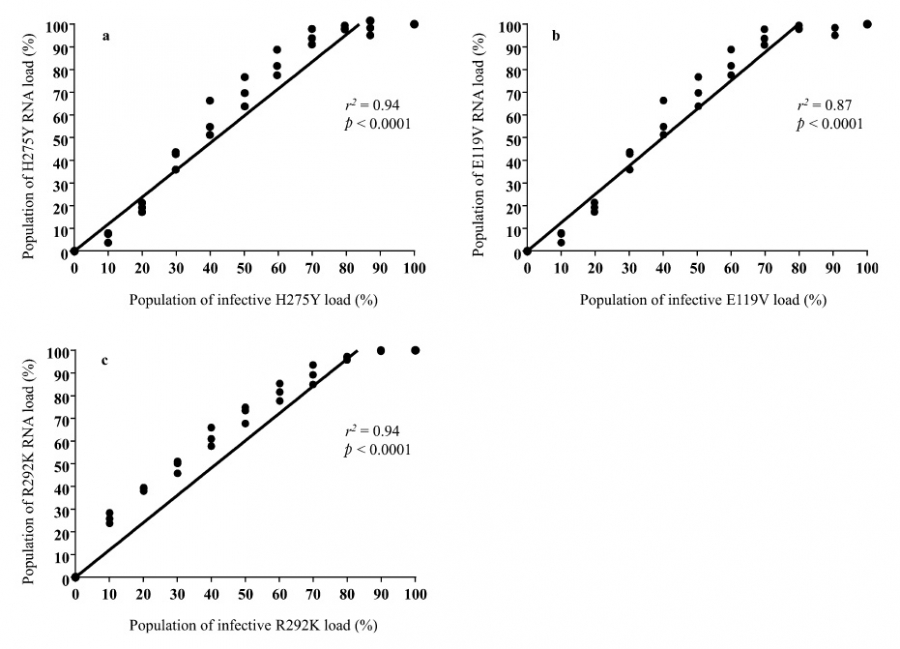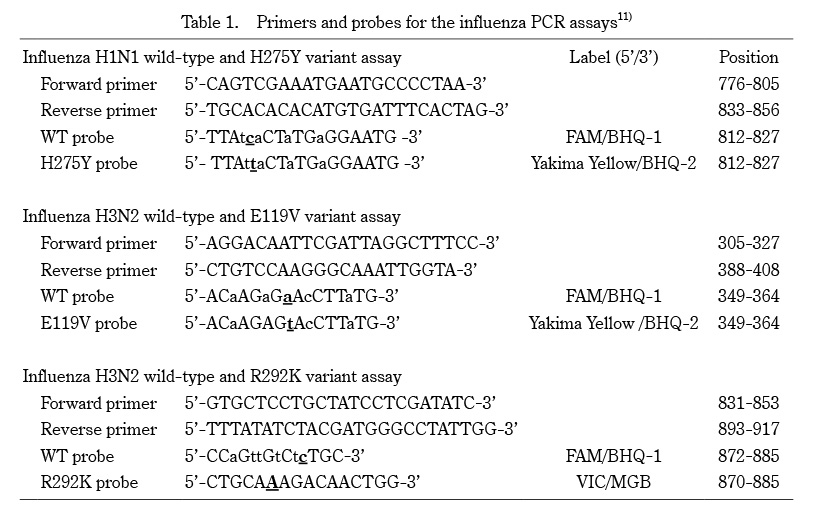1. Neuzil KM, Mellen BG, Wright PF, Mitchel EF Jr, Griffin MR. The effect of influenza on hospitalizations, outpatient visits, and courses of antibiotics in children. N Engl J Med, 342:225-231, 2000.
2. Okomo-Adhiambo M, Nguyen HT, Abd Elal A, Sleeman K, Fry AM, Gubareva LV. Drug susceptibility surveillance of influenza viruses circulating in the United States in 2011-2012:application of the WHO antiviral working group criteria. Influenza Other Respir Viruses, 8:258-265, 2014.
3. Storms AD, Gubareva LV, Su S, et al. Oseltamivir-resistant pandemic (H1N1) 2009 virus infections, United States, 2010-11. Emerg Infect Dis, 18:308-311, 2012.
4. Takashita E, Ejima M, Itoh R, et al. A community cluster of influenza A (H1N1) pdm09 virus exhibiting cross-resistance to oseltamivir and peramivir in Japan, November to December 2013. Euro Surveill, 19:20666, 2014.
5. Whitley RJ, Boucher CA, Lina B, Nguyen-Van-Tam JS, Osterhaus A, Schutten M, et al. Global assessment of resistance to neuraminidase inhibitors, 2008-2011:the Influenza Resistance Information Study (IRIS). Clin Infect Dis, 56:1197-1205, 2013.
6. Word Health Organization. Laboratory methodologies for testing the antiviral susceptibility of influenza viruses:neuraminidase inhibitor (NAI). Available at:https://www.who.int/teams/global-influenza-programme/laboratory-network/quality-assurance/antiviral-susceptibility-influenza/neuraminidase-inhibitor. Accessed 16 March 2022.
7. Duan S, Boltz DA, Li J, et al. Novel genotyping and quantitative analysis of neuraminidase inhibitor resistance-associated mutations in influenza A viruses by single-nucleotide polymorphism analysis. Antimicrob Agents Chemother, 55:4718-4127, 2011.
8. McKimm-Breschkin J, Trivedi T, Hampson A, et al. Neuraminidase sequence analysis and susceptibilities of influenza virus clinical isolates to zanamivir and oseltamivir. Antimicrob Agents Chemother, 47:2264-2272, 2003.
9. Sato M, Honzumi K, Sato T, et al. Quantitative analysis of influenza A (H3N2) E119V and R292K variants in clinical specimens by real-time reverse transcription polymerase chain reaction. J Clin Virol, 68:97-103, 2015.
10. Tashiro M, McKimm-Breschkin JL, Saito T, et al. Surveillance for neuraminidase-inhibitor-resistant influenza viruses in Japan, 1996-2007. Antivir Ther, 14:751-761, 2009.
11. van der Vries E, Jonges M, Herfst S, et al. Evaluation of a rapid molecular algorithm for detection of pandemic influenza A (H1N1) 2009 virus and screening for a key oseltamivir resistance (H275Y) substitution in neuraminidase. J Clin Virol, 47:34-37, 2010.
12. van der Vries E, Anber J, van der Linden A, et al. Molecular assays for quantitative and qualitative detection of influenza virus and oseltamivir resistance mutations. J Mol Diagn, 15:347-354, 2013.
13. Matrosovich M, Matrosovich T, Garten W, Klenk HD. New low-viscosity overlay medium for viral plaque assays. Virol J, 3:63, 2006.
14. Sato M, Honzumi K, Sato T, et al. Sequential influenza B viral load and susceptibility in children treated with oseltamivir and zanamivir. Pediatr Infect Dis J, 33:e168-e172, 2014.
15. Sato M, Ito M, Suzuki S, et al. Influenza viral load and peramivir kinetics after single administration and proposal of regimens for peramivir administration against resistant variants. Antimicrob. Agents Chemother, 59:1643-1649, 2015.
16. Kiso M, Mitamura K, Sakai-Tagawa Y, et al. Resistant influenza A viruses in children treated with oseltamivir:descriptive study. Lancet, 364:759-765, 2004.
17. Tamura D, Sugaya N, Ozawa M, et al. Frequency of drug-resistant viruses and virus shedding in pediatric influenza patients treated with neuraminidase inhibitors. Clin Infect Dis, 52:432-437, 2011.
18. Deyde VM, Okomo-Adhiambo M, Sheu TG, et al. Pyrosequencing as a tool to detect molecular markers of resistance to neuraminidase inhibitors in seasonal influenza A viruses. Antiviral Res, 81:16-24, 2009.
19. Ghedin E, Laplante J, DePasse J, et al. Deep sequencing reveals mixed infection with 2009 pandemic influenza A (H1N1) virus strains and the emergence of oseltamivir resistance. J Infect Dis, 203:168-174, 2011.
20. Takashita E, Kiso M, Fujisaki S, et al. Characterization of a large cluster of influenza A(H1N1) pdm09 viruses cross-resistant to oseltamivir and peramivir during the 2013-2014 influenza season in Japan. Antimicrob Agents Chemother, 59:2607-2617, 2015.

